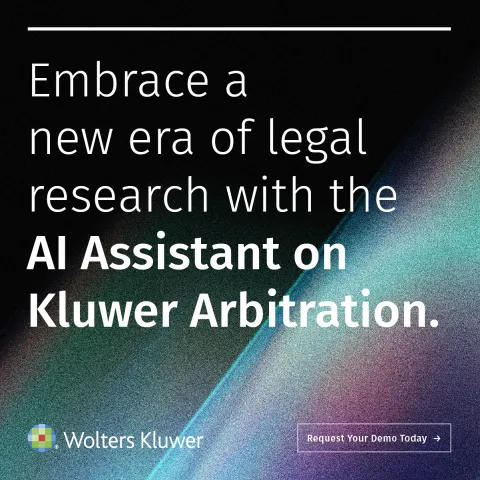A New Conversation Begins – The AAA Mediation Magazine and the Global Dialogue on Mediation
November 7, 2025
Something important — and quietly transformative — is happening in the mediation world.
The American Arbitration Association (AAA) has launched a new publication, the AAA Mediation Magazine, a digital forum dedicated exclusively to mediation: its practice, its philosophy, and its potential to transform how we manage conflict.
At first glance, it might seem like just another institutional publication. But in truth, the creation of a stand-alone mediation magazine by one of the world’s leading arbitral bodies marks a deeper shift — a signal that mediation is finally stepping out of the long shadow of arbitration and litigation and beginning to claim equal status in the architecture of dispute resolution.
And that shift now takes another step forward through a new collaboration between the AAA and the Kluwer Mediation Blog (KMB) — two platforms with distinct but complementary voices, coming together to share perspectives, raise questions, and strengthen the global conversation about mediation.
Why this collaboration matters
For years, mediation has been celebrated for its flexibility and humanity but often sidelined when serious disputes arise. Arbitration and litigation have long been viewed as the “grown-up” forums — structured, enforceable, institutionally supported.
The AAA, with its deep roots in institutional dispute resolution, is uniquely placed to help correct that imbalance. Through its global arm, the International Centre for Dispute Resolution (ICDR), it already administers cross-border mediations and sets standards for mediator conduct. Now, through Mediation Magazine, the AAA signals that mediation deserves the same level of institutional infrastructure and thought leadership as arbitration.
The Kluwer Mediation Blog, in turn, brings an international and comparative perspective. With contributors from over 50 jurisdictions — including judges, practitioners, academics, and policy leaders — KMB has spent more than a decade chronicling the evolution of mediation law and practice around the world.
The partnership between the two is therefore not just symbolic. It is substantive — a recognition that the practice of mediation has matured to a point where global dialogue and institutional collaboration are essential to its next stage of growth.
Together, these platforms can do what neither can do alone:
- Combine institutional authority with global reflexivity;
- Link practice with policy, and structure with innovation;
- Create a shared space for mediators, counsel, and policymakers to exchange ideas that transcend jurisdictional boundaries.
A sign of the times
The AAA’s move comes at a fascinating moment in the evolution of global mediation.
In recent years we’ve witnessed the adoption of the Singapore Convention on Mediation, the establishment of the International Organization for Mediation (IOMed), and the growing use of hybrid ADR processes that combine elements of facilitation, mediation, and arbitration.
Corporates, governments, and international organisations are now under pressure to demonstrate that they can resolve disputes not only efficiently, but sustainably — in ways that preserve relationships, reduce cost, and align with broader ESG and governance objectives.
In that context, the AAA’s Mediation Magazine is timely. It arrives not to preach but to explore — offering a space where mediators can think about their work beyond the narrow frame of individual cases. It invites reflection on process design, culture, ethics, technology, and professionalism — all the components that define mediation as both craft and discipline.
The magazine as a mirror of change
The inaugural issue of Mediation Magazine is organised around diverse themes:
- Early dispute resolution and proactive prevention;
- Empowerment of self-represented parties;
- Mediation in complex and technical sectors such as construction;
- The unique choreography of multi-party mediations;
- The emergence of AI as a mediator’s tool; and
- Professional standards and certification.
Taken together, these articles form a portrait of a field in motion. Mediation is no longer content to be the “soft option” — it is becoming a sophisticated, structured, and adaptable discipline, capable of managing complexity without sacrificing its human core.
Each piece speaks to a growing recognition that mediation is not just about resolving disputes but about designing dialogue. Whether that dialogue happens between family members, contractors, investors, or States, mediation increasingly functions as the connective tissue in systems too complex to be managed by adjudication alone.
What this means for mediators internationally
The collaboration between AAA and KMB also points to a larger truth: mediation is now a global practice, even if it remains locally rooted.
A mediator in California experimenting with AI-assisted preparation may have more in common with a mediator in Singapore or Lagos than with a trial lawyer down the hall. The issues are converging — technology, confidentiality, standards, ethics, data protection, enforceability. The challenge is to share insights quickly enough to keep pace with change.
That’s where this partnership adds value. The AAA brings the perspective of a long-standing institution navigating these questions within a domestic and international framework. The KMB brings comparative analysis and critical commentary — ensuring that these developments are contextualised within broader global trends.
Together, we can examine questions that matter not only to mediators but to policymakers and institutional designers:
- How should mediation be integrated into public-sector and cross-border governance?
- What does professionalism mean in a discipline built on informality?
- Can we build standards without eroding diversity?
- And what role can technology and data play in strengthening trust in mediated outcomes?
A meeting point of voices
The Mediation Magazine’s early editorial direction deserves recognition. It does not limit itself to “how-to” pieces or institutional updates. Instead, it offers an inclusive forum where practitioners, academics, and even policymakers can reflect on the wider social function of mediation.
It also breaks down the artificial separation between domestic and international mediation. For example, a piece on mediator certification in California inevitably resonates with current debates in Singapore, the UK, Nigeria, and the EU. Likewise, an article on early dispute resolution protocols mirrors experiments with dispute avoidance boards and facilitation models in infrastructure projects across the Middle East and Australasia.
In that sense, the magazine and this collaboration reflect a wider pattern: mediation is developing its own language of global relevance. The underlying principles — neutrality, confidentiality, voluntariness, empowerment — are constant. But their expression is becoming increasingly interconnected.
Building an ecosystem
Perhaps the most exciting aspect of this collaboration is that it begins to create what mediation has long lacked: an ecosystem of institutional support and cross-pollination.
Arbitration has long benefited from formal rules, curated case law, and networks of institutions that reinforce its authority. Mediation, by contrast, has evolved organically, often through the efforts of dedicated individuals and small organisations.
Now, we are seeing the emergence of a comparable structure — not in imitation of arbitration, but in recognition that mediation deserves its own architecture of scholarship, practice, and professional community. The AAA–KMB collaboration contributes to that architecture.
By linking two complementary audiences — the institutional and the international — it helps ensure that new ideas in mediation do not remain siloed. It opens the door for practitioners, policy designers, and academics to learn from each other in real time.
Looking ahead
The Mediation Magazine’s launch issue closes with an invitation for dialogue — to submit articles, reflections, and research that explore where mediation is heading next. The KMB’s readers, many of whom are already shaping that evolution, will find much to engage with there.
In return, the KMB will bring its hallmark editorial curiosity to the magazine’s pages — not as an echo chamber but as a mirror, reflecting how domestic developments intersect with global questions.
Over the coming months, we will continue to share reflections on new editions of the magazine and to highlight areas of convergence and divergence between North American practice and the broader international landscape.
As mediation practitioners, scholars, and policymakers, we are all participants in the same experiment: how to make constructive dialogue not the exception but the norm in the management of conflict.
The AAA’s Mediation Magazine and this new collaboration offer one more channel for that conversation — a reminder that mediation’s greatest strength has always been its ability to connect people, perspectives, and possibilities.
In the end, perhaps this partnership is more than editorial. It is symbolic of mediation’s next stage — from profession to movement, from practice to culture.
You may also like







